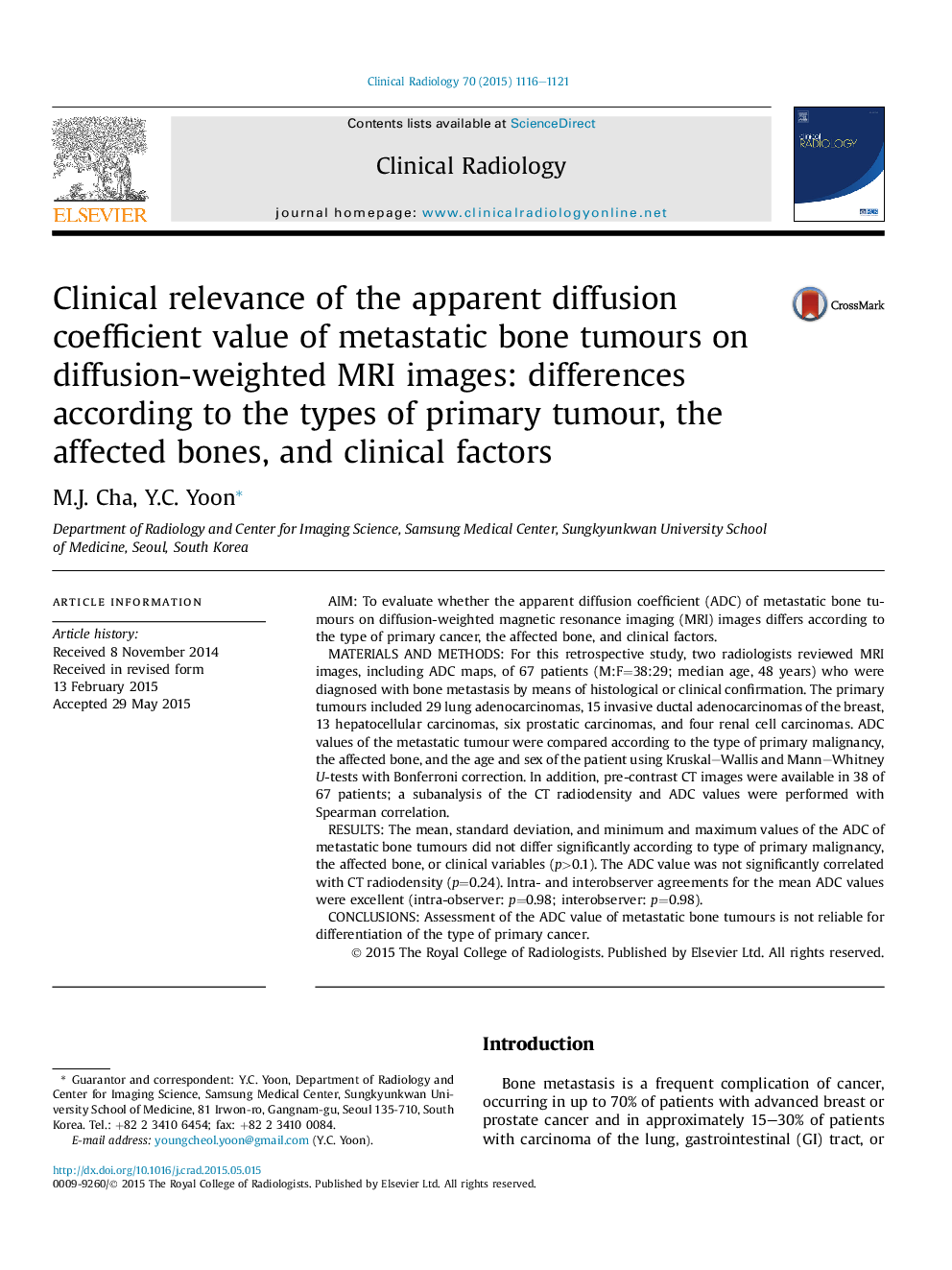| Article ID | Journal | Published Year | Pages | File Type |
|---|---|---|---|---|
| 3981505 | Clinical Radiology | 2015 | 6 Pages |
•ADC of bone metastasis is not reliable for separation of the type of primary cancer.•ADC of bone metastasis does not differ according to the affected bone.•There is no significant correlation between ADC value and CT density.
AimTo evaluate whether the apparent diffusion coefficient (ADC) of metastatic bone tumours on diffusion-weighted magnetic resonance imaging (MRI) images differs according to the type of primary cancer, the affected bone, and clinical factors.Materials and methodsFor this retrospective study, two radiologists reviewed MRI images, including ADC maps, of 67 patients (M:F=38:29; median age, 48 years) who were diagnosed with bone metastasis by means of histological or clinical confirmation. The primary tumours included 29 lung adenocarcinomas, 15 invasive ductal adenocarcinomas of the breast, 13 hepatocellular carcinomas, six prostatic carcinomas, and four renal cell carcinomas. ADC values of the metastatic tumour were compared according to the type of primary malignancy, the affected bone, and the age and sex of the patient using Kruskal–Wallis and Mann–Whitney U-tests with Bonferroni correction. In addition, pre-contrast CT images were available in 38 of 67 patients; a subanalysis of the CT radiodensity and ADC values were performed with Spearman correlation.ResultsThe mean, standard deviation, and minimum and maximum values of the ADC of metastatic bone tumours did not differ significantly according to type of primary malignancy, the affected bone, or clinical variables (p>0.1). The ADC value was not significantly correlated with CT radiodensity (p=0.24). Intra- and interobserver agreements for the mean ADC values were excellent (intra-observer: p=0.98; interobserver: p=0.98).ConclusionsAssessment of the ADC value of metastatic bone tumours is not reliable for differentiation of the type of primary cancer.
